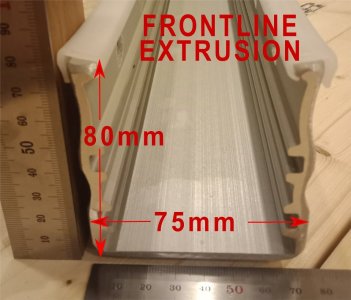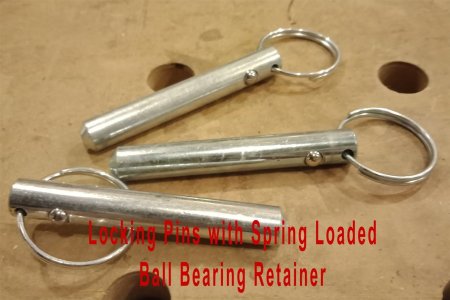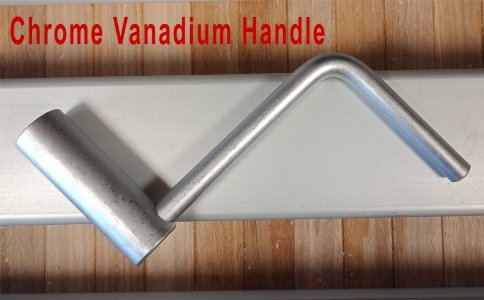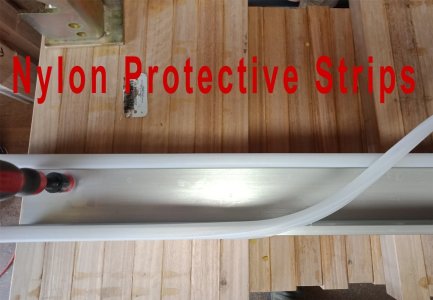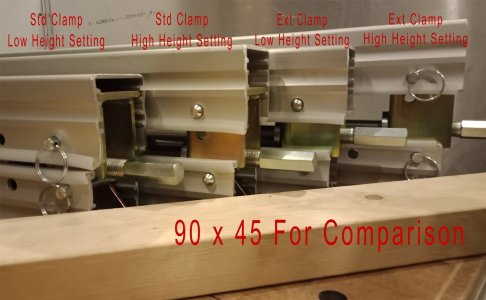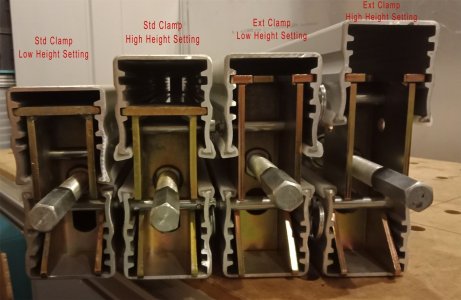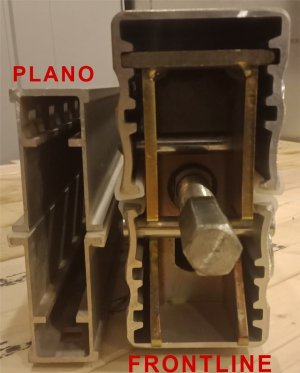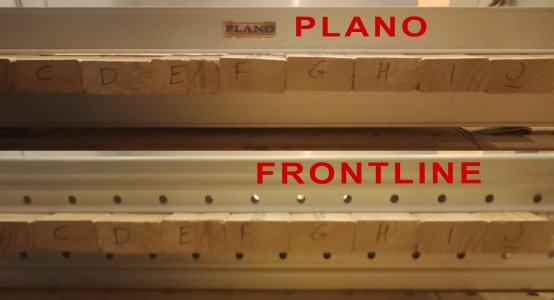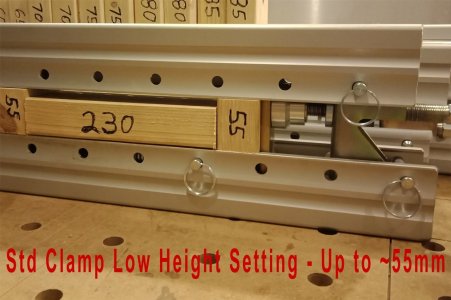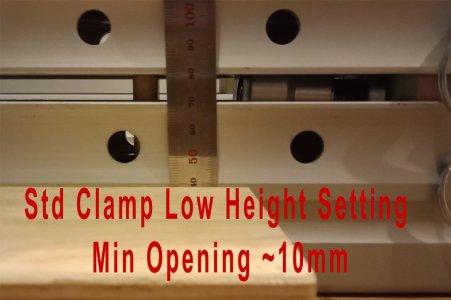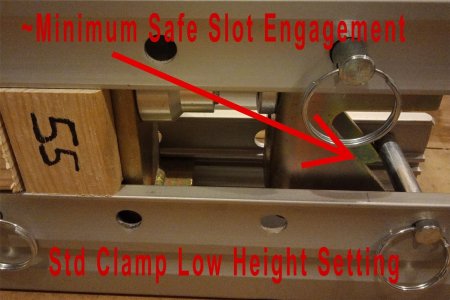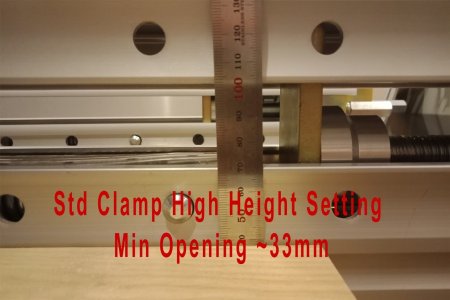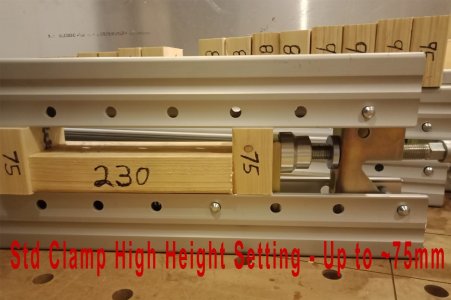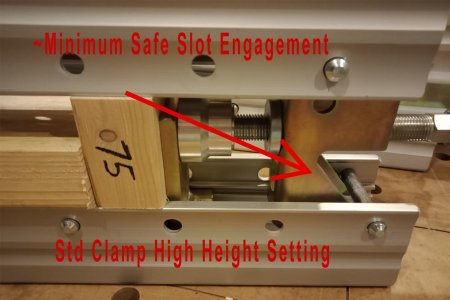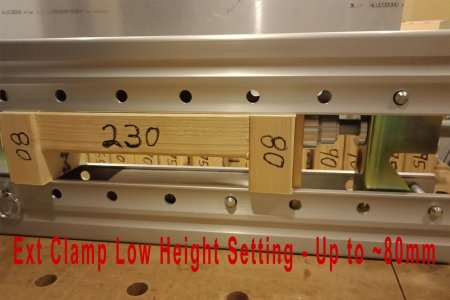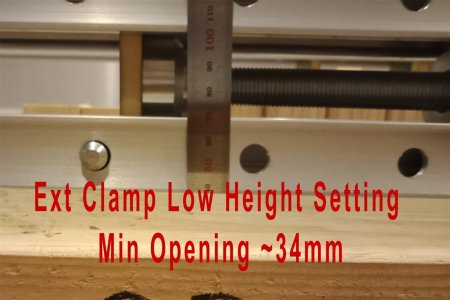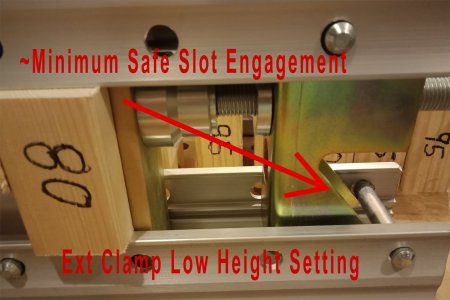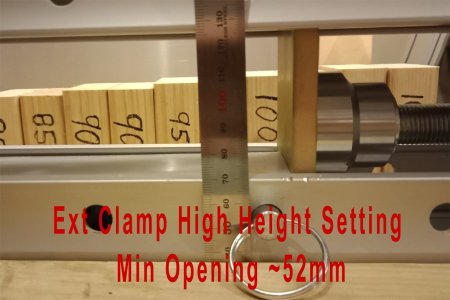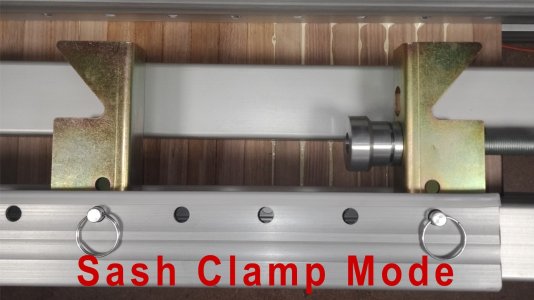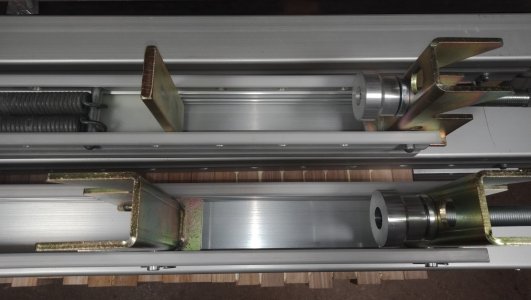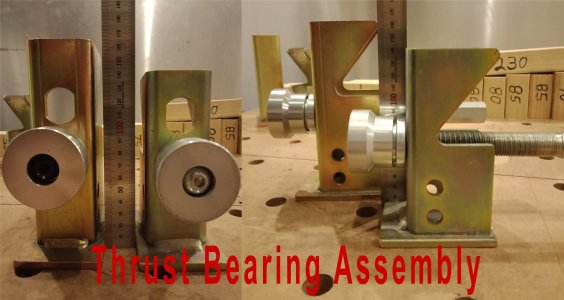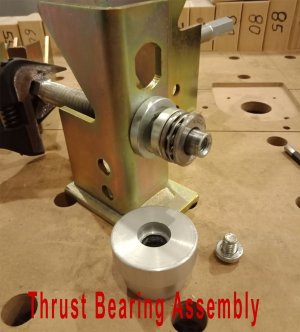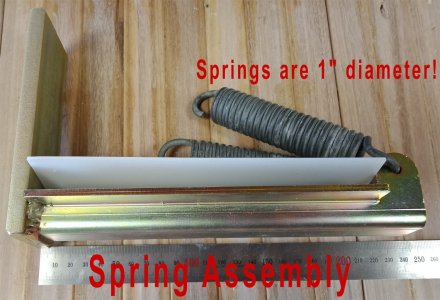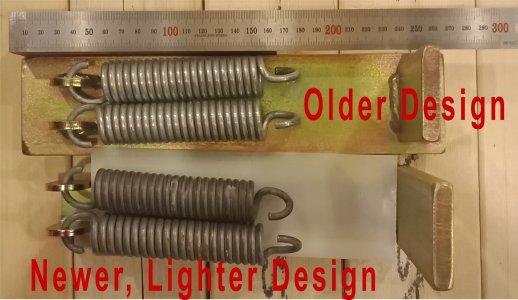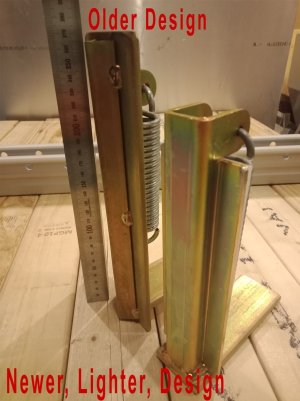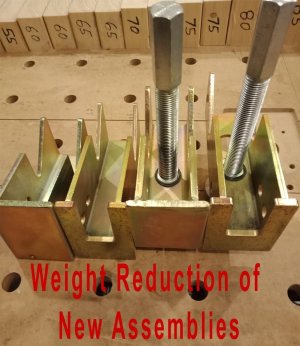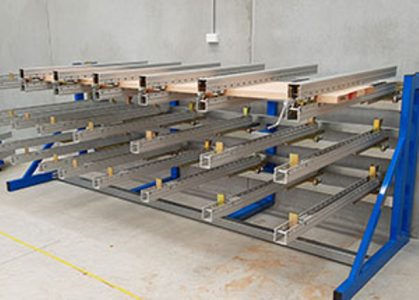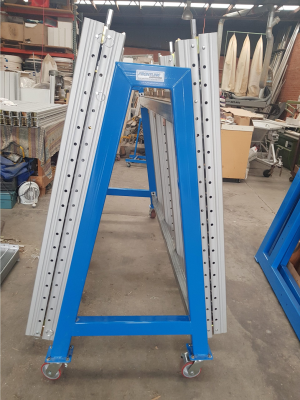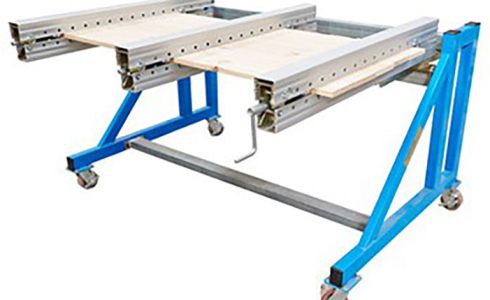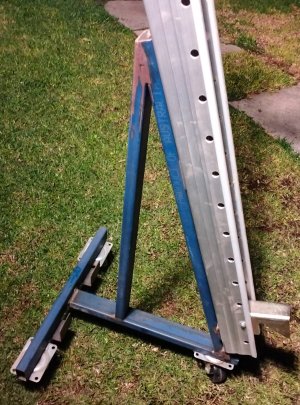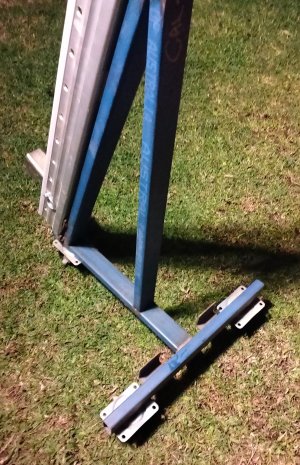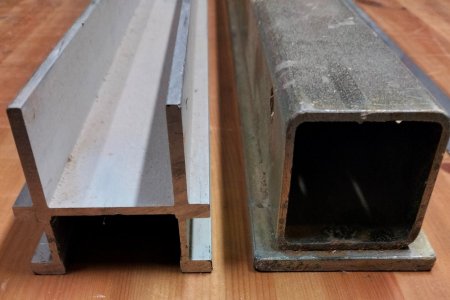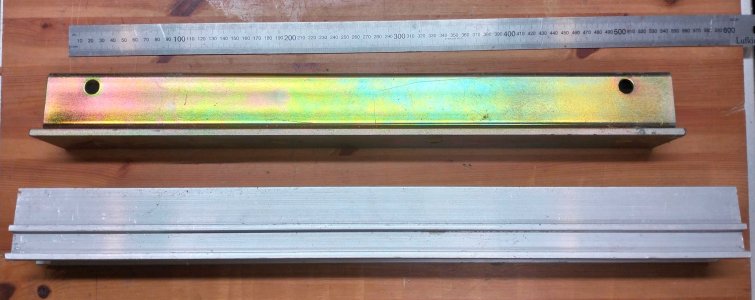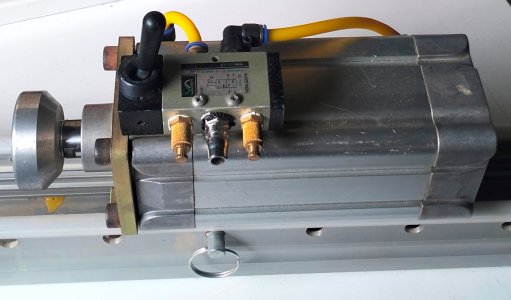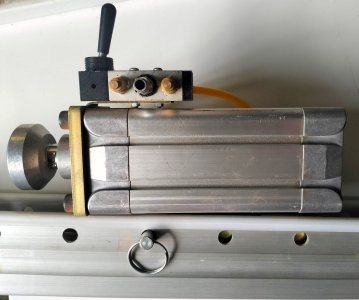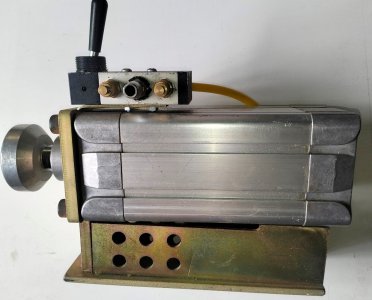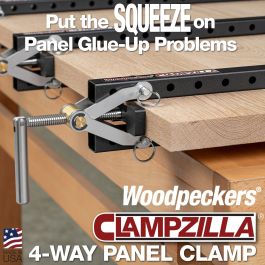luvmytoolz
Member
Frontline Interlocking (Panel) Clamps Review
Hi all, as a woodworker I always greatly appreciate product reviews to help determine the value and usefulness of tools, so I'm taking the liberty to re-post a review I did years ago on a primarily Aussie members forum, as I'm hoping it may be of benefit to others here as there doesn't really seem to be very much info on this product anywhere outside Australia even though it's sold world wide.
Disclaimer: My apologies in advance as this fairly comprehensive review might be a bit lengthy and is based purely on my opinion and experiences, which may not align with yours, or others views. In essence, I wanted to detail the many reasons I became such an immediate fan of Frontline Interlocking clamps, along with as many technical details as possible, so people can see exactly why these are so different to anything else in this market, and are well worth every cent.
Spending large amounts of hard earned cash can be daunting for anyone, especially if you aren't entirely sure what you buy will work as required or will potentially be a waste of money. I think we're all guilty of having bought tools thinking they'll be perfect for an intended purpose, only to find they didn't perform as advertised, were difficult in some aspect or function, or just a damn PITA to use generally.
That's exactly the opposite of how I felt when I first got my Frontline clamps some 25 years ago, and it was further reinforced the first time I used them. Any thoughts I'd had of "well that was a helluva lot of money spent" went out the window, and I have never regretted them a single day since!
While these clamps can be more expensive and/or prohibitively so for most hobbyists or casual DIY'ers, and I hear loads of comments to that effect in the forums, the value for money these clamps provide is just astounding. They are purpose built and borne out of a need of a (clearly very entrepreneurial) professional woodworker who ran a large cabinet making company for many years. So after looking at them, and especially after using them, it's quite obvious they are not only designed to perform, but are also built to a standard, not down to a price. There's a number of very good reasons why you'll see these clamps used extensively in cabinetry and furniture making businesses in Australia, instead of other types or brands of clamps.
I can see numerous ways in which the inventor Con could have chosen to save on materials, manufacturing costs, increased limits, etc, but of course all at the expense of the high standard he set. Do the assemblies really need 10mm thick hardened steel plates? probably not, would one high quality spring instead of two do the job? maybe, does the aluminium profile really need all the edges chamfered when other brands simply square cut the ends of their clamps? not really, etc, etc. But these are the design touches that show the inventors pride in work and help set this product apart from all the other ones on the market, it's immediately apparent absolutely no corners were cut, and everything has been over engineered to guarantee maximum robustness, performance, quality, and longevity.
These are the clamps you buy once, and use for the rest of your life. Or if unfortunately circumstances change, resell them if necessary, as the resale value of these as with all really high quality products is very good, Festool resale type good!
Since I bought my first set of 4 clamps around 25 years ago, I've since added a set of the extended height clamps, some extension bars, some 1.8m clamps, as well a couple of 2.4m ones I use as sash clamps, and a really exciting and incredibly useful pneumatic piston clamp that I'll detail here at a later date when I can.
Hi all, as a woodworker I always greatly appreciate product reviews to help determine the value and usefulness of tools, so I'm taking the liberty to re-post a review I did years ago on a primarily Aussie members forum, as I'm hoping it may be of benefit to others here as there doesn't really seem to be very much info on this product anywhere outside Australia even though it's sold world wide.
Disclaimer: My apologies in advance as this fairly comprehensive review might be a bit lengthy and is based purely on my opinion and experiences, which may not align with yours, or others views. In essence, I wanted to detail the many reasons I became such an immediate fan of Frontline Interlocking clamps, along with as many technical details as possible, so people can see exactly why these are so different to anything else in this market, and are well worth every cent.
Spending large amounts of hard earned cash can be daunting for anyone, especially if you aren't entirely sure what you buy will work as required or will potentially be a waste of money. I think we're all guilty of having bought tools thinking they'll be perfect for an intended purpose, only to find they didn't perform as advertised, were difficult in some aspect or function, or just a damn PITA to use generally.
That's exactly the opposite of how I felt when I first got my Frontline clamps some 25 years ago, and it was further reinforced the first time I used them. Any thoughts I'd had of "well that was a helluva lot of money spent" went out the window, and I have never regretted them a single day since!
While these clamps can be more expensive and/or prohibitively so for most hobbyists or casual DIY'ers, and I hear loads of comments to that effect in the forums, the value for money these clamps provide is just astounding. They are purpose built and borne out of a need of a (clearly very entrepreneurial) professional woodworker who ran a large cabinet making company for many years. So after looking at them, and especially after using them, it's quite obvious they are not only designed to perform, but are also built to a standard, not down to a price. There's a number of very good reasons why you'll see these clamps used extensively in cabinetry and furniture making businesses in Australia, instead of other types or brands of clamps.
I can see numerous ways in which the inventor Con could have chosen to save on materials, manufacturing costs, increased limits, etc, but of course all at the expense of the high standard he set. Do the assemblies really need 10mm thick hardened steel plates? probably not, would one high quality spring instead of two do the job? maybe, does the aluminium profile really need all the edges chamfered when other brands simply square cut the ends of their clamps? not really, etc, etc. But these are the design touches that show the inventors pride in work and help set this product apart from all the other ones on the market, it's immediately apparent absolutely no corners were cut, and everything has been over engineered to guarantee maximum robustness, performance, quality, and longevity.
These are the clamps you buy once, and use for the rest of your life. Or if unfortunately circumstances change, resell them if necessary, as the resale value of these as with all really high quality products is very good, Festool resale type good!
Since I bought my first set of 4 clamps around 25 years ago, I've since added a set of the extended height clamps, some extension bars, some 1.8m clamps, as well a couple of 2.4m ones I use as sash clamps, and a really exciting and incredibly useful pneumatic piston clamp that I'll detail here at a later date when I can.
Last edited:


